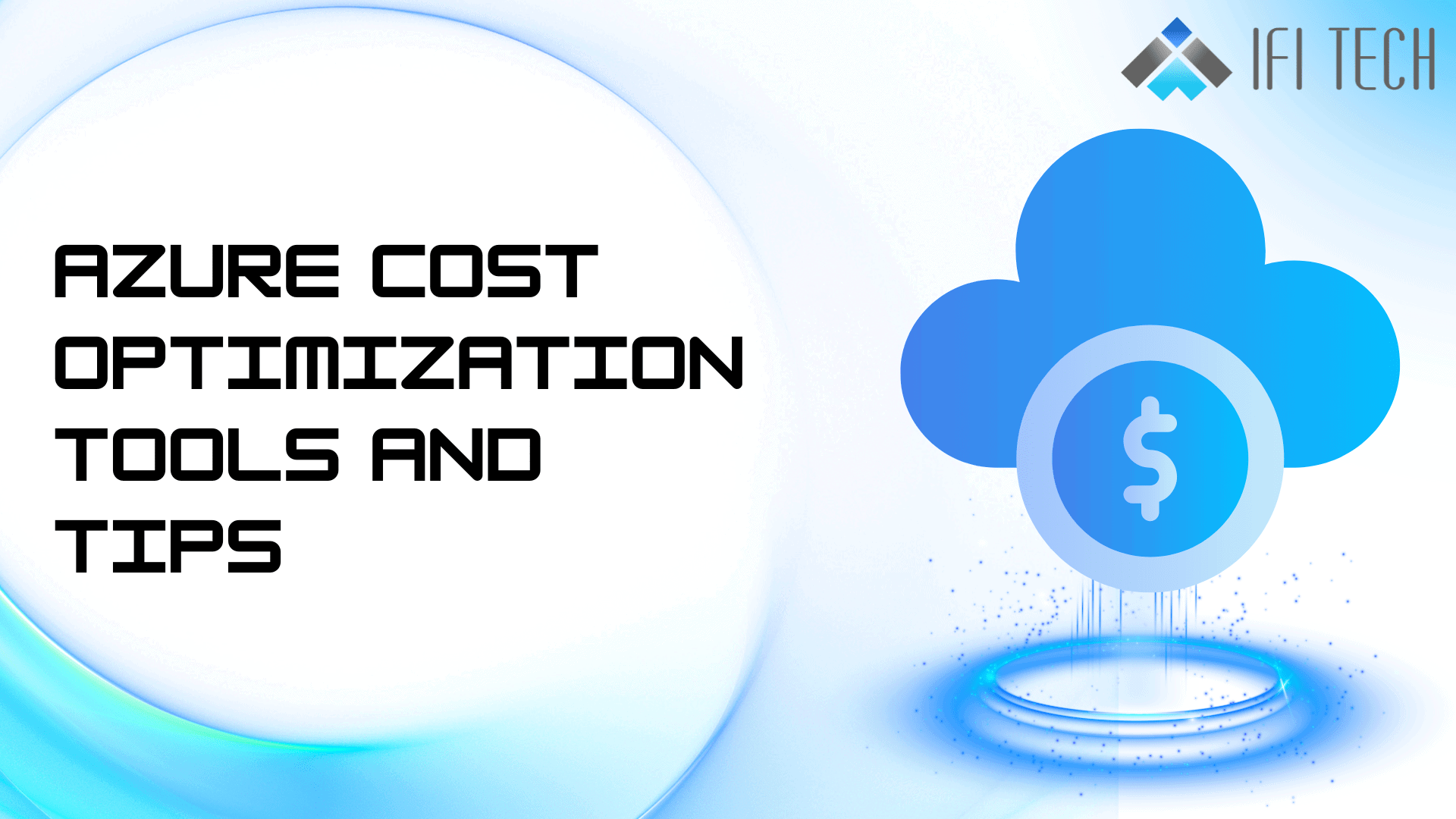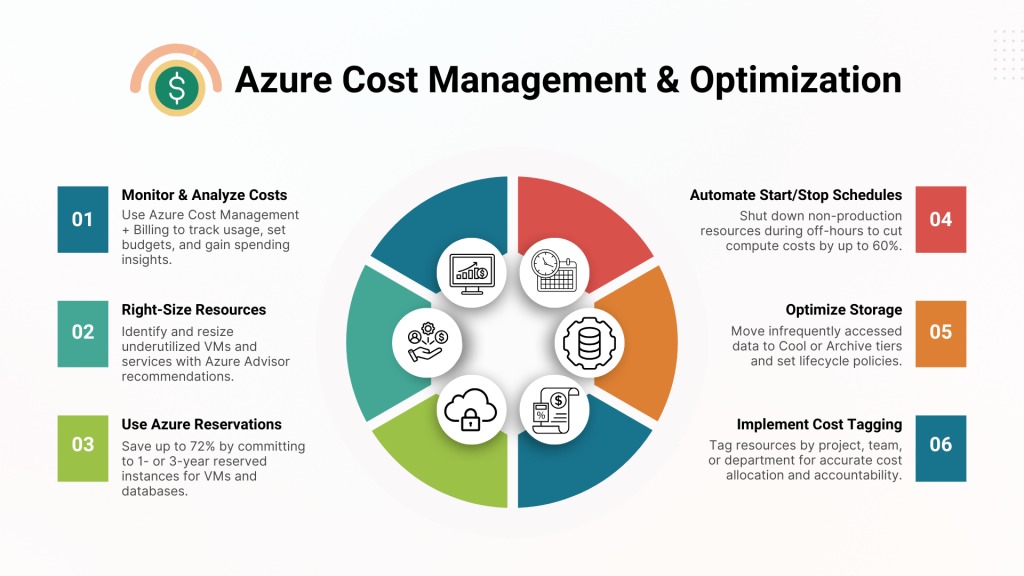




Managing cloud costs with Azure is more than simply cutting down your bills; it is a conscious choice of making informed decisions and ensuring smart moves of your team without wastage. Businesses can literally witness their expenses jumping as they scale cloud usage. However, the right combination of tips, tools, and automation can make sure that your cloud costs are highly optimized and less daunting.
Here are the key tools and tips for optimizing cloud costs with Azure.
Azure offers multiple tools to help your business comprehend and control the spending:
These tools come together to create a solid foundation for financial monitoring in Azure.
Visibility is the first step to optimization. Awareness of your spending is vital to cut down the cost.

It is common for organizations to overspend as they end up running oversized virtual machines. The following steps can be taken to right-size:
Automation tools can help match your workloads with the ideal VM sizes and remove human guesswork from the process.
Schedule your VMs to shut down after business hours if you have environments that don’t need to run 24/7. Azure Automation or Logic Apps can help you implement this with minimal effort.
This simple tactic can cut costs significantly without impacting productivity.
Workloads can vary, whether by time of day, user activity, or campaign spikes. Autoscaling allows Azure to add or cut down resources on the basis of predefined rules.
Azure provides a variety of tools and strategies that can help teams track, control, and reduce spending. Here’s a breakdown of key approaches to Azure cost optimization:
IFI Technologies assists your business in the efficient deployment of Azure. They offer tailored solutions, leveraging the cost management tools by Azure, auto-scaling, and resource tagging to optimize cloud spend. Businesses can streamline deployment, reduce manual effort, and ensure efficient scaling of operations on Azure with professional assistance from IFI Technologies.
Azure cloud cost optimization is more than just a one-time effort, it demands regular audits, ongoing monitoring, and strategic tools utilization. The above-mentioned tips can help your business gain control over its cloud costs, whether it is just starting out or managing a complex, multi-cloud infrastructure.
Begin with native Azure tools, then scale up to automation as your footprint grows. With the right practices in place, you’ll not only save money but also increase cloud efficiency and engineer productivity.